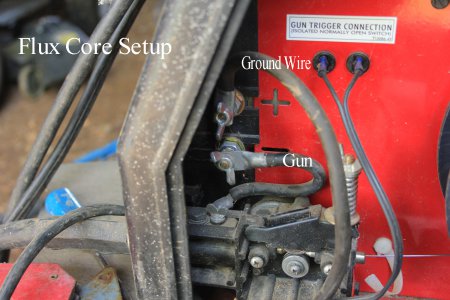- Joined
- Feb 24, 2015
- Messages
- 1,382
They'll hold. And paint hides a lot of ugly, just kidding, The technique, with mig, is to move forward and backward, forward gets to the toe of the fillet weld, then back up a little to fill the weld, this gives the pleasing ripples. Most gun motion with mig is forward and back, no side to side. The roots may need a little side to side, if that is the case then on the next root lower your voltage and wfs . After the roots are in turn the welder bach up to the proper settings for the fill passes.
Oh, now you tell me, Chuck.
I have a very hard time seeing what I'm welding after the arc starts. This causes me to veer off course and never be sure when I am at the end of the material.
I have the shade on my lens set to 12. I have a cheater lens on my hood which works very well, except in the glare of the arc. I get absolutely no flash with the auto darkening helmet I have.
Is there a trick to seeing what you are welding? I know a couple other guys who say they have this problem, too.
Question #2: Is there any special technique to welding vertically that's different from a horizontal weld?
If I push the weld, it will be easier for me to see if I run the bead up.
Jody (welding tips and tricks.com) says to use a triangular weave on vertical welds, basically tracing the edge of the puddle.
Last edited:


